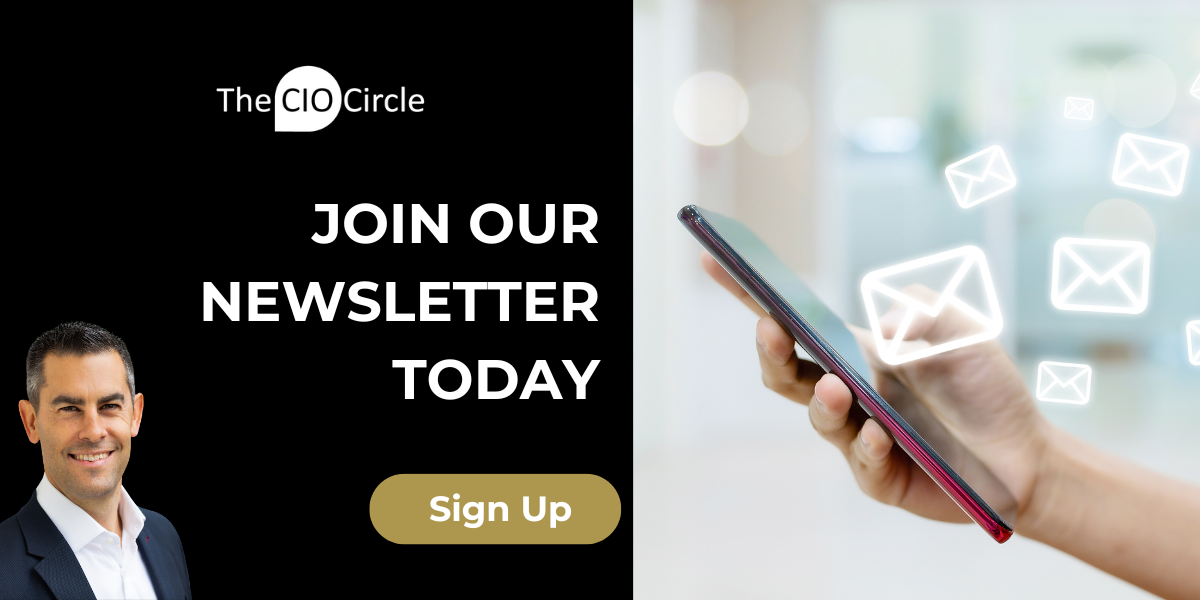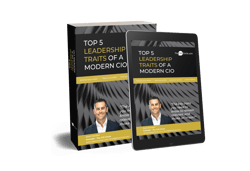DAVE LEDOUX
Chief Information Officer at Innovive Health
Can you please provide a little introduction about yourself
What has your journey to your position been like? What path have you taken?
Has it always been your vision to reach the position you’re at? Was your current role part of your vision to become a tech leader?
Having an impactful role that can shape the outcome and success of a company is where I find motivation. Without sufficient autonomy and decision-making capacity, my interest waned. So, my vision is somewhat less specific than “I want to become CIO”, but my current role does fit well into the profile of where I am motivated to commit my time and succeed.
The really important part is that failure or success in my role — at any company — contributes strongly to failure or success for the whole enterprise. On that front, my current role ticks the boxes. While positioned as a leader, I never consider myself “higher” or “above” anyone on my teams or in my company. Each role has unique responsibilities and markers for success, but I don’t view organizational structures as vertical with low or high levels. Maybe a better perspective is that some roles have far more emphasis on decision-making and planning, and other roles center around daily actions.
Have you had a role model or mentor that has helped you on your journey?
While no one specific person contributed directly, a number of people at varying levels of companies I have worked for absolutely shaped what kind of person I have become professionally. To be honest, only looking towards the top of a company is a mistake when considering who can or could shape you. Actively collecting and observing positive traits of anyone around you is best practice. In the end, I see myself as a builder; that word is multifaceted, but servant-leadership is one with which I identify.
For instance, in my path of customer support and service, it’s important to keep in mind that we are all customers somewhere in our lives. We shop at brick-and-mortar and online stores, and we interact with employees representing that brand. How do you feel at the end of the transaction? What factors contribute to that good or bad feeling? How can you learn from that and translate it to what it would take for your customers to come away with a positive feeling? (be they internal employees or external clients equally). This is where I look for mentorship moments, and this is how I try and stay nimble in my approach to making support interactions as pleasurable and efficient as possible.
How do you see the role of the technology leader evolving over the next 5 years?
Past eras have shown technology leaders telling people how things need to be done. “These are the rules” or “you can’t use that because we use this” and “you need to contact us in this specific way or we can’t help you”. It is starting already, but the notion of meeting the customer where they prefer will be a significant shift in thinking at the leadership level. Employees will drive these interactions more, and companies will loosen their grip on the rules of engagement.
Digging a bit deeper into the IT space, VPN/hardware/proprietary/ownership is rapidly changing to work from anywhere on whatever device you bring and using flexible cloud SaaS platforms to accomplish this. In many spaces, this is the norm already, but in larger enterprises, the shift will take much longer due to legacy platforms and methods. Technology leaders can no longer consider a castle and moat approach since the castle (office) doesn’t get used nearly as much anymore. So, the security must take place at the user level, and that’s where Zero Trust comes in. It’s exciting and refreshing.
What do you see as the next leap in technology that will impact your business or industry in particular?
Healthcare needs to be data-driven, and it can’t happen soon enough. Every provider needs to be able to look back at a granular level and learn from the care they have been providing historically, in order to be able to predict the care they should be providing in the future. Can you prevent everything with this data? Of course not — not even close. But you can predict and gain efficiency on the cost front, and you could predict and gain efficiency on the care front.
More specifically: let’s say with anonymized data you can learn from your care that a mental patient with Type 2 Diabetes who is taking these 4 medications who experiences an elevated resting heart rate above 145bpm will get admitted to the Emergency Room 67% of the time. With that knowledge — very granular data — you could intervene (assume there is a hardware monitor that can report heart rate, among other biometric data points in real-time) with either an in-person MAV (medication administration visit) or cloud-controlled dispensing device. This is a future that interests me!
The hardware side moves very quickly. But the data insight side is where the rubber meets the road. That leap — a leap Innovive Health is very invested in — is where my industry can impart real change in how care is given in the future.
Is there anything in particular that you would still like to achieve in your career or what is the next step on your journey?
My strong preference is to run towards new challenges. As a result, I don’t restrict myself to any one market segment or industry and hope to be able to work in many of them before I consider my career to be complete or over.
The most interesting problems — for me, anyway — are the ones I don’t even understand on the first pass. Who wants to solve similar problems over and over but just change the company you work for? I hope my next step is nothing like the one I’m standing on now.
If you could change one thing in the world, what would it be?
A big thank you to Dave Ledoux from Innovive Health for sharing his journey to date.
If you would like to gain more perspective from Tech Leaders and CIOs you can read some of our other interviews here.
July 4, 2022


